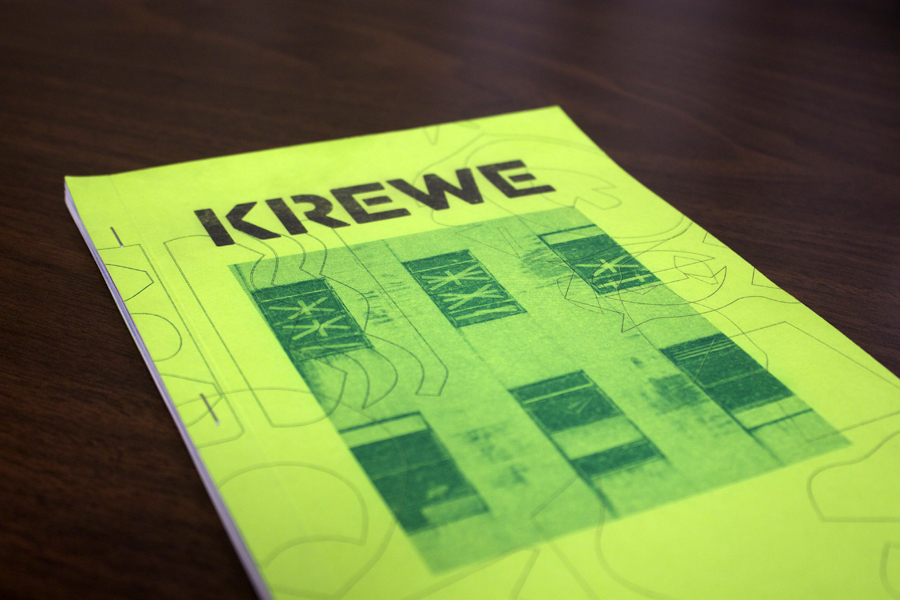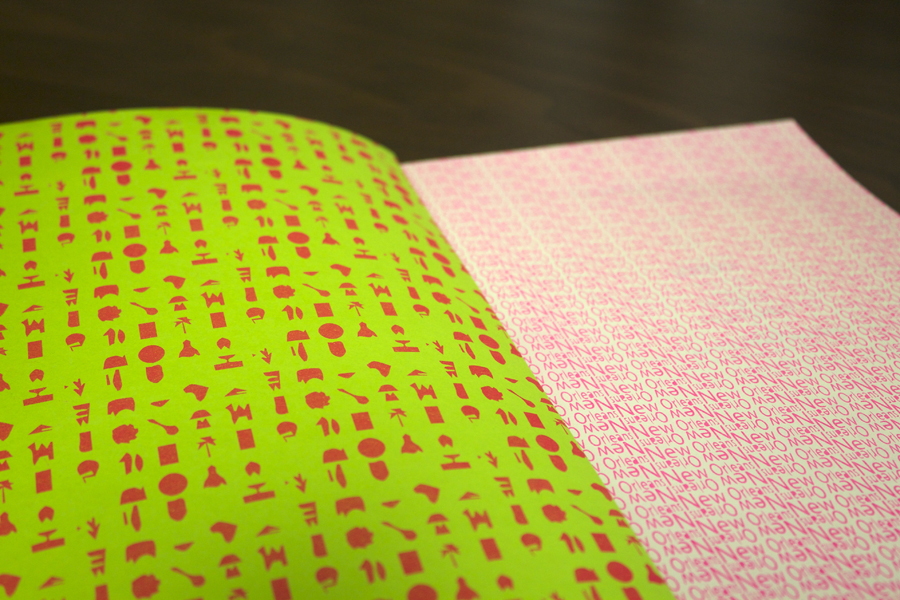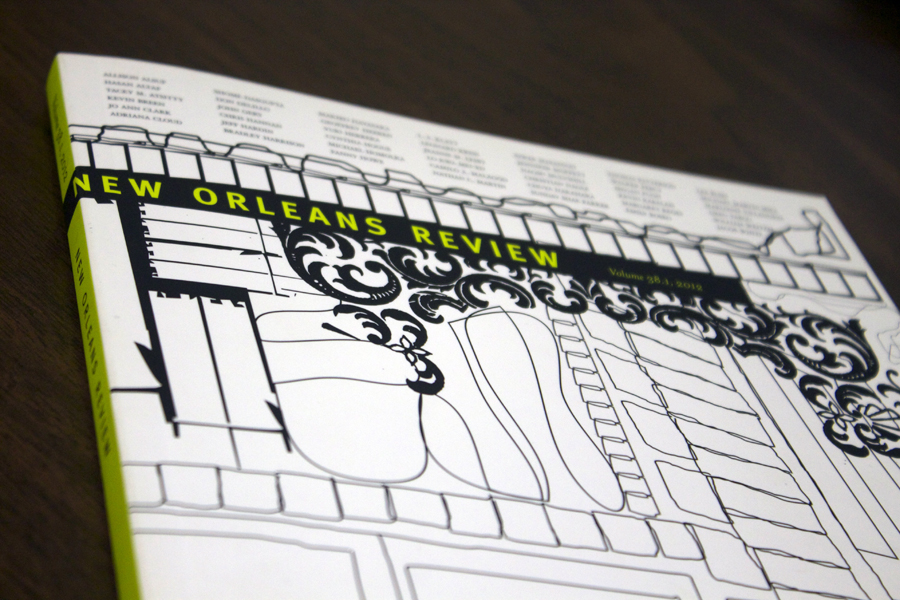Your ongoing project, “Where Is the Black in Graphic Design?” is of singular importance and power in the landscape of research projects in contemporary graphic design. Can you explain the project and your trajectory?
Well the project initially started when I was in grad school at CalArts and it was a reaction to my frustration in the lack of presence of blacks in the field of graphic design. So my first thought was asking the question, “why isn’t there more blacks in graphic design?” Then my reaction was to come up with a solution, well that’s what I was thinking at the time. Mind you, I’m leaving out a lot of in-between. Then it lead to the fact that no matter what your racial or ethnic background is, that if you consider yourself a graphic designer, then you probably have never heard or was aware of any black graphic designer that had made any significant contributions to the field. So thats really it, my search is about discovering/finding black people who have historically made significant contributions to graphic design that most graphic designers have never heard of. That research has lead me to very specific areas of design, like publication design, black women in design and soon I will be doing some research about graphic novels, comic books and cartoonist. My long term goal is to come up with a time line from the beginning and lead up to today.
My goal is to start making little zines for each subject. For a long time, I’ve felt pressure to go out and try to publish this huge anthology, okay I’m sort of exaggerating, about all of my research and this approach has gotten me nowhere because I’m constantly feeling like my research is incomplete and the idea was kind of contacting some prominent publishing company is intimidating. So, i’ve decided to just start small by making my lectures a series of smaller booklets about each subject. So one would be about black graphic designers whom worked commercially and in the non profit sector, one would be about the black press, one about Louise Jefferson, and so on. My plan is to have one done by each residency.
You’ve made a circuitous route from the Southeast to the West Coast and back—how does New Orleans differ now from before?
Well, there’s an entrepreneurial spirit among a large portion of the population that wasn’t there before. There’s been a huge surge of start up companies and non-profits. In regards to graphic design, there’s a slightly bit more opportunity for work, but design is still a bit on an infant in New Orleans there is still much more attention and investment in the fine arts. The cost of living is on the rise, my fear is that within the next 20 years the cost-of-living will be similar to L.A. Its already nicknamed “Hollywood South.” There ‘s the gentrification issue that started before Hurricane Katrina, but now its a huge issue. There are so many newcomers to the city that I’ve personally never experience before. Before I left, you assumed that everyone was from the area and you simply asked “what high school did you go to” because in New Orleans, whatever high school you attended said a lot about that person, but now you most often assume that most people aren’t from here and that they are a transplant from somewhere else. This surge of newcomers is great on the one hand, and on the other hand, it has the possibility of damaging the authenticity of the culture. Don’t get me wrong, some of the changes are positive, but they are not genuine to New Orleans, and for some of the newcomers, some things that the city didn’t possess seemed weird, even crazy, but the omission of those things is what made/makes the city unique. For example, there are bike lanes everywhere and the locals are having a hard time adjusting, people from places like, lets say the west coast, complain about the lack of vegan and vegetarian options, so there is a shift to have more vegan and or vegetarian restaurants, but I say, “go your ass back to the west coast” if you want more vegetarian options, thats not what New Orleans is about. We now have Hop on-Hop off buses, and that’s all I’m going to say about “dat.” We also have Chipotle and H&M, which I still have mix feelings about.
It’s kind of funny, I left Los Angeles to go back home, but Los Angeles started to feel more like home, and sometimes being home, I feel more like a visitor, and more and more, the two are starting to feel like the same place.
What about when you come to Vermont?
Vermont isn’t like either LA or New Orleans, especially Montpelier. When I’m out in town in Montpelier, I definitely feel like outsider/tourist/foreigner, but I don’t mean that in a bad or negative way. It definitely doesn’t felt like home and I’m okay with that. Its actually kind of nice to have a place to go to that’s not tied to either of the other two places. Although its a place that I travel to every six months for work, its feels more like my secret getaway, I pretend that I escape to my non-posh/simple winter home and hang out with the most fabulous people on the planet, detached from family, news, television and for me, even social media. Its nice because its the only place that I have that feels like my own special place separate from my family and and I secretly like that.
What drives you to teach?
All the bad and uninteresting design out there in the world. Okay, seriously, well some of that is true. Apart of that previous statement is that for me, there is too much design out in the world that looks the same and that has no substance and what drives me to teach is that I know that most of my students have the desire to continue to produce that sameness and I’m there to whip it out of them.
That’s a pretty brutal statement! Can you elaborate?
Well, let me first address the initial question that I just vaguely answered. As corny as it may sound my passion for graphic design is really what drives me to teach. I honestly can’t think of anything else that I would rather do other than graphic design and thats teaching or otherwise. What I love most about design is that it is extremely flexible. Which brings me back to my earlier comment about “whipping it out of them.” What I was trying to express is that I want my students to discover their own individual voice in design by developing strong typography skills, which will separate them from “design hackers” and by coming up with a diverse and unique image-making techniques, which will also separate their work from the masses, while also giving them the courage to eventually unlock and discover the content and subject-matter that they really give a shit about.
You’re involved in community-based projects, as well—can you tell us about them?
I often work with a non profit organization called Big Class whose mission is to cultivate and support New Orleans’ young writers through creative collaborations with schools and communities. After each writing project, Big Class publishes a book of the students’ work and I design the books for them, pro-bono. In the near future, after the holidays, I will start helping the kids design their own books and magazines.
I’m also a part of a working group that was organized by the president of the Arts Council of New Orleans that is trying to develop a curriculum, research and documentation, and creation of the a non-profit organization called “Youth Solutions” (working title) whose objective is to develop a curriculum that integrates design education with grief-trauma intervention for the youth in New Orleans, ages 14-18. We are trying to figure out how kids can use design to make their community better. The students will learn design skills and then use those skills to create projects for their community and then they can work through the mentorship program and get paid to teach other kids. Will we be launching the pilot in April, 2015. We are partnering with the city’s organization called NOLA For Life, which focuses on reducing the murder rate in New Orleans.
My studio mate Daniela Marx and I have finally opened our studio “Esprit De Port”, (we’ve had the space for six months, but now it finally functions as a workspace), where we hope to be able to create some amazing design work, but also to launch our own non-profit organization called “ReThink New Orleans.” The mission is to hopefully address three areas in the community of New Orleans: to raise awareness of the power of graphic design to the youth, which could lead to future education and possible careers, to create a space where like-minded designers can collaborate, work and research together, sell their products and show their latest works and to educate through technology classes and workshops to the adult community.
What does the workspace consist of and how is it used?
It has a lot of stuff: Tables and desks. A bunch of chairs—a couple of them are Eames chairs. One really old olive green loveseat. Two sewing machines and about a hundred pounds of fabric. A really old projector and typewriter. Lots and lots of different paper stock, plexiglass, spray paint and exterior house paint. An old rusted grocery basket. Screenprinting equipment. Tons of type rub-ons and other random type things like magnets. Currently it’s being used as space for artists and designers to use for client work, self-initiated projects, meeting with clients, collaborations, parties, a place to sell work, and very soon, small exhibitions.
How does your approach to teaching in the New Orleans area and your approach to teaching at VCFA differ?
Alongside teaching at VCFA, I teach in very small town 50 miles north of New Orleans called Hammond. I don’t know if there is a huge difference. I used to think that there was due to the difference between teaching undergrads and teaching grads but I do my best to encourage both sets of students to be true and honest to themselves in their work. With the undergrads that I teach in Louisiana, there is more of me showing examples of things that I think they should be aware of out in the world, more bringing things to them and with VCFA its more like giving suggestions and letting the grads take it where it will lead them.
Running sports | 【発売情報】 近日発売予定のナイキストア オンライン リストックまとめ – スニーカーウォーズ











